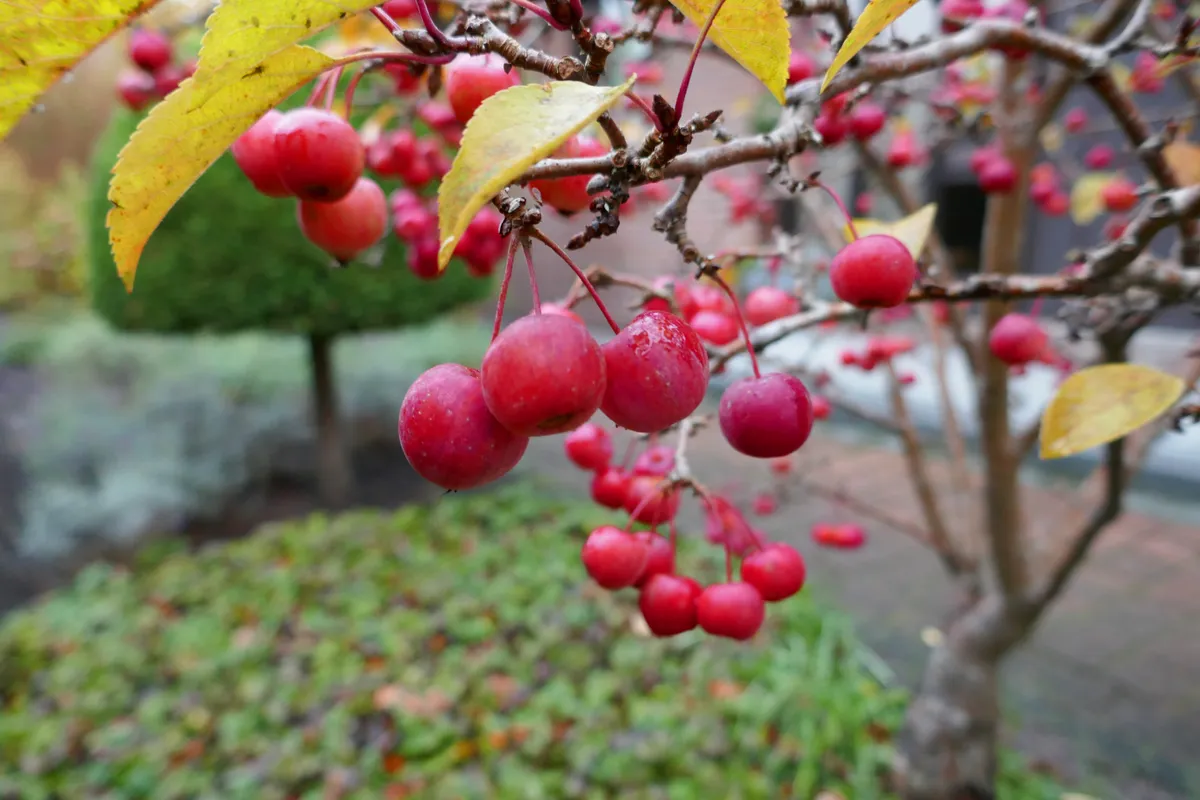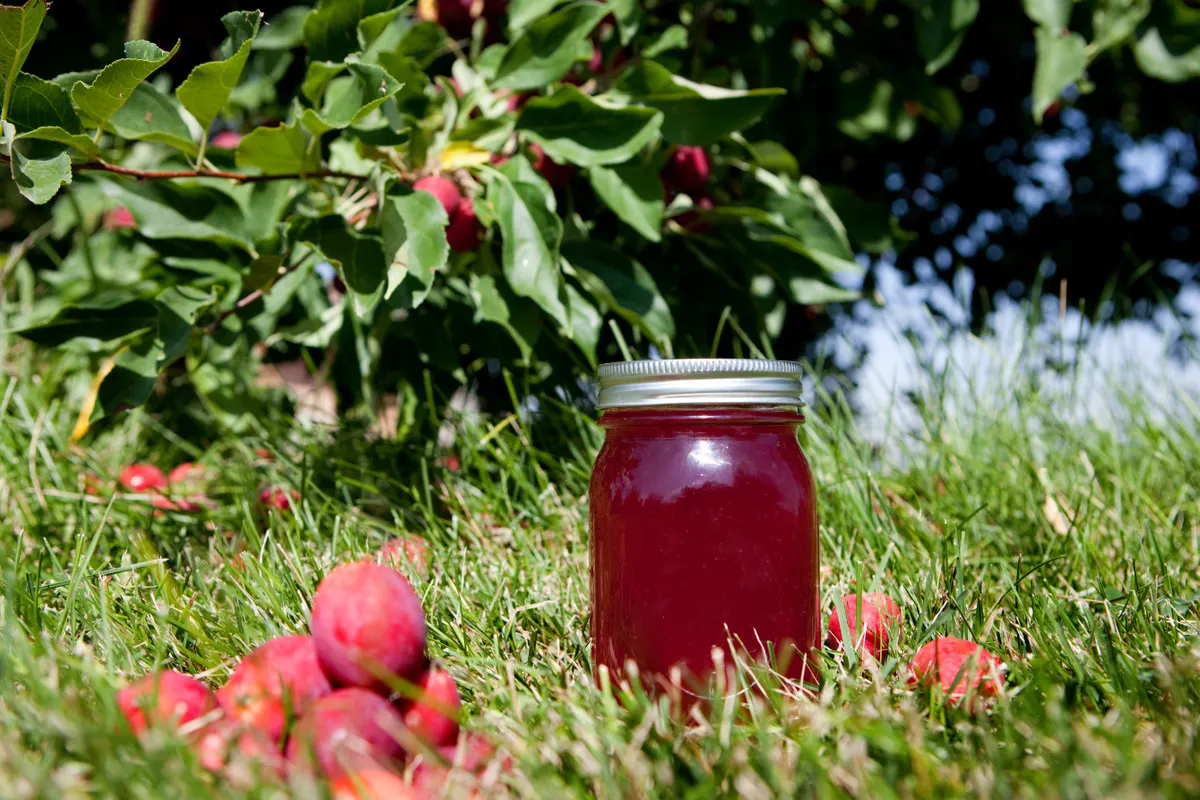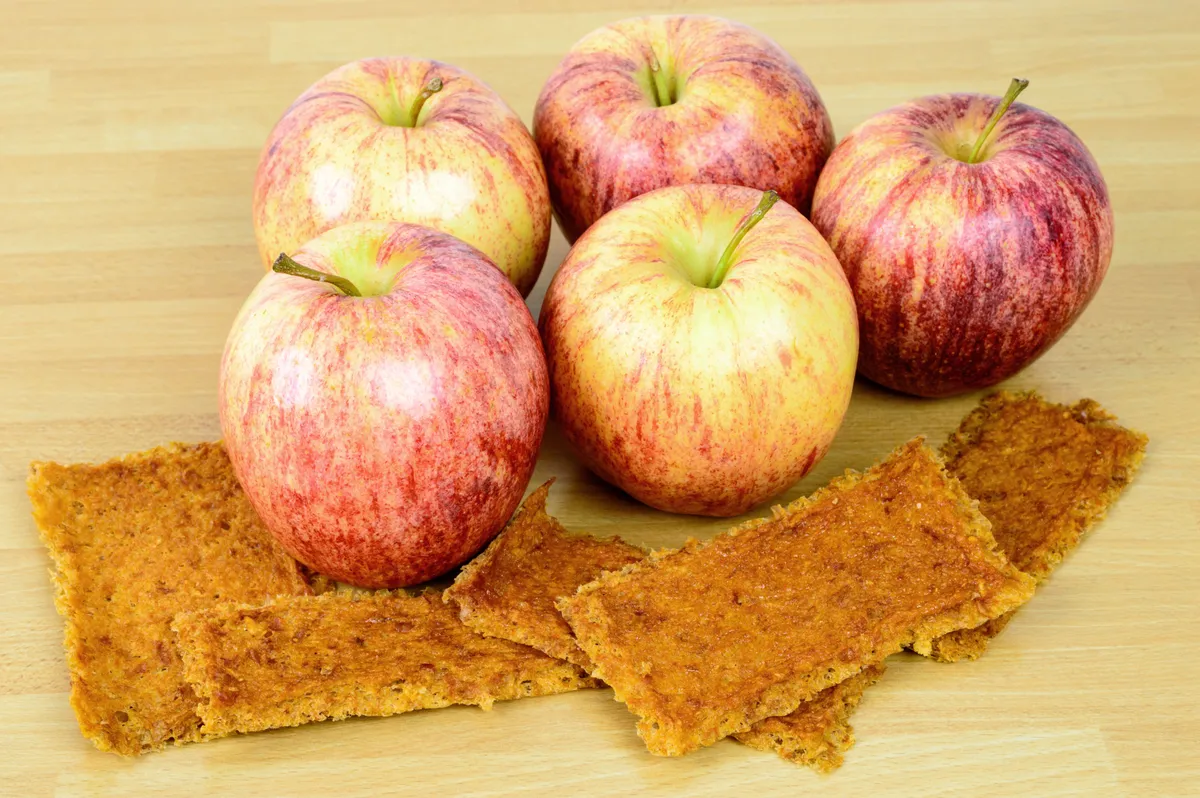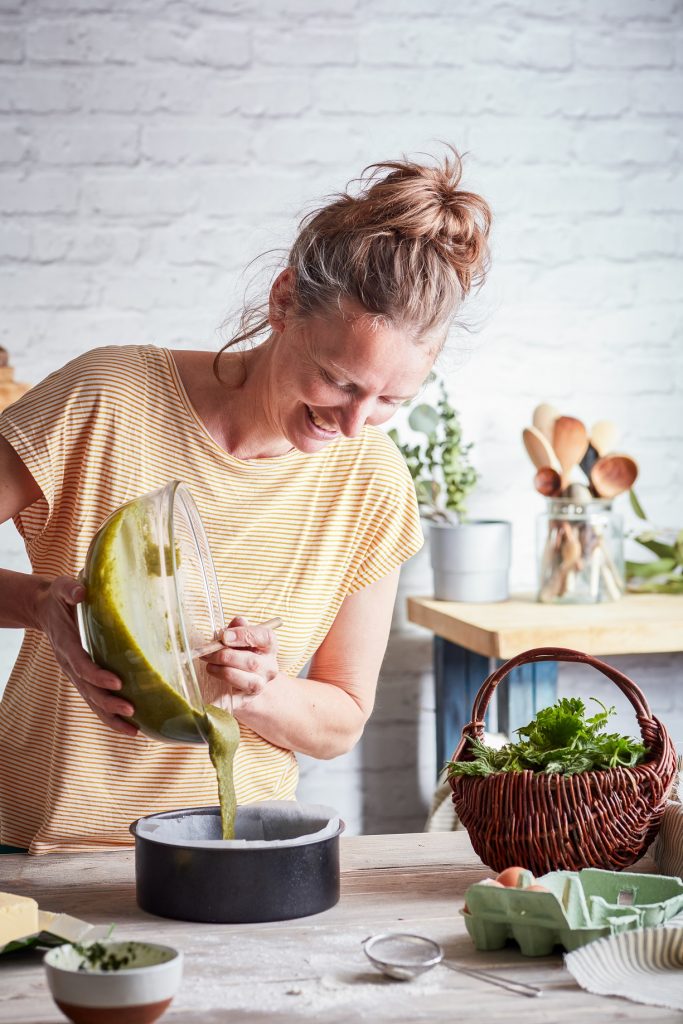Apples have been around since prehistoric times and there are now over 6,000 cultivated varieties worldwide, all originating from wild apples. Crab apples are native to Europe and Turkey, but have been introduced in north-east Australia and southern Argentina.
Many of us will be familiar with that old Welsh saying, ‘an apple a day keeps the doctor away’; indeed, crab apples are packed with antioxidants, vitamins and fibre. They're also one of the best fruits for their wonderful tartness that combines beautifully with sugar to make complex sweets.
This guide takes a closer look at crab apples (Malus sylvestris), revealing information on crab apple trees and the fruits that grow on them, how to identify these fruits, when to forage them and delicious crab apples recipes – including crab apple jelly.
Looking for more things to forage in late summer and autumn? Check out our guides to blackberries, mushrooms and bracket fungi.
What are crab apples?
The UK’s native, wild crab apples are round and yellow when ripe, but another common variety here is slightly larger (though still small) and more apple-shaped. Cultivated varieties are small and yellowy-red to fully red.
Crab apples are packed with antioxidants, vitamins and fibre.

Crab apple guide
Crab apple trees
The crab apple tree grows up to 12m/40ft tall with simple, serrated leaves and red or yellow fruits (around 2–3cm/1in across) with one to two small seeds in the centre.
Crab apple trees can live up to 100 years old. Occasionally you may find a truly wild one in a woodland, but many cultivated varieties appear in gardens or on tree-lined streets, where their tiny apples roll across the pavement. These types are equally delicious – just not as sharp as the original, wild crab apple.

Learn more about apples
The British apple season marks the start of autumn as trees heavy with fruit are harvested to be eaten fresh, cooked into crumbles or pies, and mulled to make cider. Discover the best British apple varieties for eating, cooking and drinking in our expert guide.
When and where to pick crab apples
Crab apples are ready to pick in early to late autumn and grow in mature woodlands, hedgerows, wastelands, scrublands, grass verges, gardens and urban streets.
Love your hedgerows?
Discover the flowers, shrubs and trees that make up a typical British hedgerow and why they are so important for wildlife, in our expert guide.
How to forage crab apples
To pick crab apples, twist the stem: if they come away easily, they are ripe.
Best crab apple recipes
Discover what you can do with crab apples with these easy recipes.
Crab apple jelly
Traditional British jellies and jams are often high in refined sugar, but this crab apple jelly recipe uses 20% less sugar and only unrefined golden rather than refined white. It has a fantastic flavour, texture and colour and is really very simple to make.

Spiced crab apple and rowanberry leathers
This simple recipe for homemade spiced crab-apple and rowanberry leather makes an excellent hiking snack.


